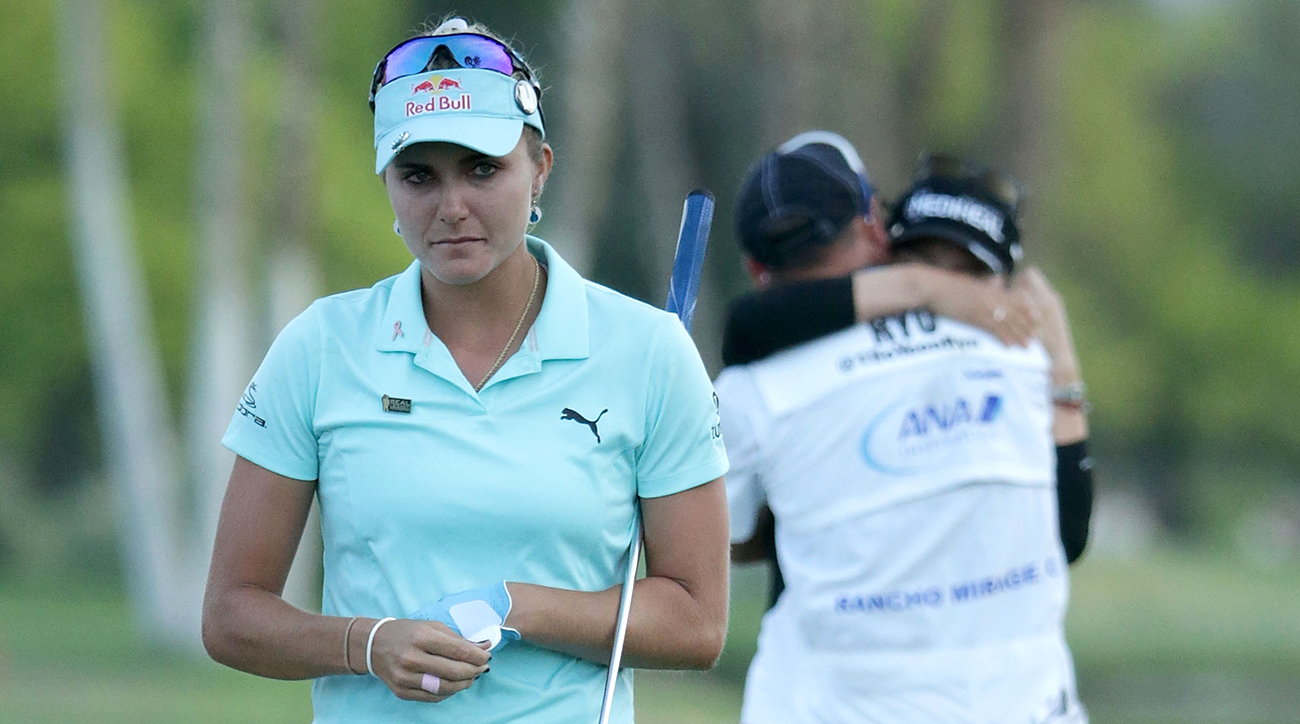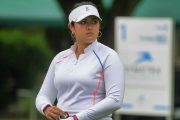“Is this a joke?”
No better words were ever spoken on a golf course, by a major champion.
This is that time of the year when we turn our attention to the first major championship of the year.
Granted The Masters is one short week away, but the women beat everyone to the punch, this is the ANA Inspiration week, the descendant of what was forever The Dinah Shore.
This is where we look back on “The Joke” as Lexi Thompson called it when bone-headed LPGA officials decided to render the world’s first four-shot penalty on one of their finest, a decision they should look back on and wonder what the hell they were thinking.
It was the wrong decision and if, at the time, they were smart enough, they would have looked back at the 2013 Masters for guidance on how to handle a really difficult situation.
Before we further scold the LPGA officials who basically stole a major championship, let’s see how they handled things at Augusta National Golf Club, where everything is done the right way.
Tiger Woods was cruising through his second round late Friday when he hit his third shot at the par five 15th. His ball crashed the pin and spun back into the water. Woods took a drop, played what was his fifth shot then finished his round.
David Eger, a former tournament director with both the USGA and PGA Tour, was watching that round from his Florida home.
As Woods left the 16th green, where he got up and down for par, Eger noticed Woods had dropped a shot since he had last seen his score. Eger was curious to see how that had happened.
Eger re-wound the recorded broadcast to watch Woods on the 15th hole. He saw Woods play his third shot that wound up in the water. He then watched Woods take his drop.
“I could see there was a divot — not a divot, a divot hole — when he played the shot the second time that was not there the first time,” Eger said. “I played it again and again. I could see that the fairway was spotless the first time he played the shot and there was that divot hole, maybe three or four feet in front of where he played after the drop.”
The Rules of Golf are tough at times. A player, when competing under rule 26-1-a, as Woods was, is required to drop “as nearly as possible” to the ball’s previous position. Some say the language is imprecise, but another view is that the language could not be more precise. It is worded that way because a golfer might not know the exact location from which he played his previous shot.
Of course, if the golfer takes a divot, then the exact location is known. And Woods took a divot on the shot that found the water. The procedure then is to drop immediately behind the divot. The intention of the rule is to have the golfer play, in essence, the exact same shot again. But Woods did not do that.
Eger knew there was most likely a rules violation. Eger worked through his network to get word to Fred Ridley, head of the Masters Competition Committee back then and now Chairman of Augusta National.
It was an “uh-oh” moment.
Woods finished his round and bascially incriminated himself in his interview with ESPN.
Woods volunteered that he went “two yards” farther back when he made his drop on 15, to play a slightly different shot the second time.
At first Ridley was prone to do nothing, no penalty, the drop appeared close enough.
That night, Ridley was informed of Woods’s comments to ESPN, by way of a call from Jim Nantz of CBS. The network was taping its 11:30 p.m. Masters recap show when producers saw Twitter chatter questioning the legality of Woods’s drop, on the basis of the ESPN interview, during which Woods essentially incriminated himself, unknowingly indicating he made an incorrect drop when he moved back those two yards.
After the call from Nantz, Ridley contacted Woods’s agent, Mark Steinberg, Steinberg forwarded Ridley’s message to Woods and Woods met with Ridley on Saturday morning. At that time, Woods was assessed the two-shot penalty.
HOWEVER, WOODS WAS NOT PENALIZED FOR SIGNING A WRONG SCORECARD.
If that had happened, he would have been disqualified and sent home after 36 holes.
The precedent was set for the LPGA but the organization was too stupid to research this.
Thompson was penalized two shots for improperly returning her ball to its mark on a green during Saturday’s round after a viewer emailed LPGA officials during Sunday’s broadcast. She was penalized two more shots for signing an incorrect scorecard for her Saturday round. Thompson ultimately lost in a playoff to So Yeon Ryu. Worse than that, they informed her during her final round.
Instead of the two-shot penalty, and she would have won the tournament by two shots, she ended up tied with So Yeon Ryu. Lexi lost in a playoff and history was made.
Shortly after the ANA, the USGA and R&A led the formation of a video review working group, which included the PGA Tour, LPGA, European Tour, Ladies European Tour and PGA of America.
Also, just three weeks after Thompson was hit with the four-shot penalty, the USGA and R&A released a new Rules of Golf decision decision (34-3/10) limiting video evidence in two ways:
1. If an infraction can’t be seen with the naked eye, there’s no penalty, even if video shows otherwise.
2. If a tournament committee determines that a player does “all that can be reasonably expected to make an accurate estimation or measurement” in determining a line or position to play from or to spot a ball, then there will be no penalty even if video replay later shows that to be wrong.
The “Lexi Rule” was born.
But it was too late for justice to be served.
Hopefully Thompson will win the ANA this week.
Then justice will have been served.
Finally.






































